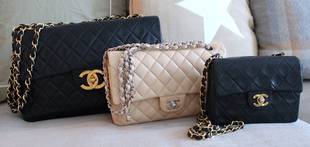
Threats To Brands
Normally, successful brands are under threat, particularly for competitors. Management complacency or neglect are probably the greatest threats, since an alert management will recognize (or foresee) challenges from competitors and from market and environmental change, and will take appropriate action, as stated by G.Randall (1993).
In recent years, other threats appeared, especially in consumer markets:
1. Fragmentation of markets is a reflection of changing technology (ability to manufacture variations economically), and of competitive action to segment markets.
2. Repertoire buying means that in some markets consumers buy several brands, each for a different purpose: cheap instant coffee powder, a premium brand of granules ground coffee and a decaffeinated brand, for example.
3. Media cost Inflation has affected many countries as some costs, particularly television time, have risen faster than inflation.
4. Media fragmentation has been caused by technological developments in satellites cable, pay-as-you-view, video-recorder, internet etc. Some commentators believe that such developments will make it difficult to produce traditional heavy, mass-market campaigns, though the evidence so far is inconclusive.
5. Changing life styles, with more leisure, and a wider range of activities to fill it, may make some key target groups more difficult to reach.
Making Other People's Brands
In industrial markets, it is common for companies to make not only components but complete products for other manufacturers, who then "badge" them with their own name or brand. The firm whose name appears on the product is known as an "Original Equipment Manufacturer" (OEM). Sometimes the actual manufacturer is not identified at all; in other cases, where the component is important or visible and there is a substantial after-market, as with car tires, the actual manufacturer's name appears, but is much less important than the OEM's.
The same as true as in customer markets are retailers' brand, like own-brand, own-label, private label, distributor's own brand, retailer-originated brand, etc.. In some markets such as clothing, retailers' brand account for the majority of sales; in other, for much less. In supermarkets in both the U.S.A. and the Philippines, own-label sales have settled down at around 30 percent of total packaged goods sales, though this covers a wide range in different product categories and different companies.
Retailers' brands fall into five main types, such as:
1. Store name brands - Bench, Levi's
2. Retailer-controlled brands - Dixon's. Shaisho.
3. Designer labels - owned by manufacturer or retailer.
4. Licensed names - a real or imaginary character.
5. Generics - absolutely basic products at very low prices.
In retailer's brands, the manufacturer should approach the decision through a number of questions, as stated by G.Randall (1993):
1. Do I have the choice? If many brands are de-listed or become uncompetitive, will it become necessary to fill the gap with retailers' brands?
2. What is the capacity situation? If there is industry over-capacity either locally or regionally, there will be pressure to produce own-label.
3. What is the company mission and culture? Some senior managers see themselves as brand manufacturers or marketers, and would see any derogation from that as the betrayal of a trust.
4. Do we have the skills to make retailers' brands? Making brands for other people demands different skills and priorities from those needed in marketing manufacturers' brands-perhaps a different culture and different managers.
5. If we do, what and for whom should we make? There are several choices, including manufacturing for selected clients only, making products similar to or different from your existing brands, and developing new brands in cooperation with the customer.

















